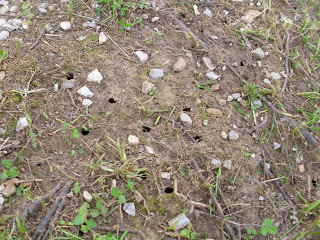I’ve seen these interesting, big-bug-eyed insects several times over the course of my life. I recall hearing their loud, deafening cadence somewhere in the distant past. But I’ve never seen them quite like this:
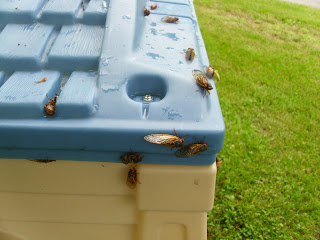 |
| They were all over the boys’ playhouse… |
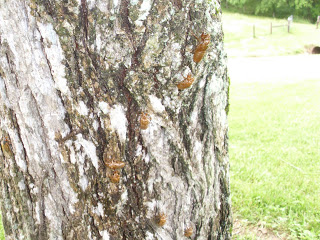 |
| and the trees… |
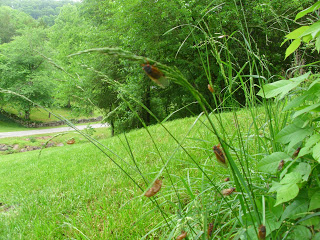 |
| and the grass. Hundreds of thousands of these insects can emerge from a SINGLE ACRE! |
They are EVERYWHERE!!! You can’t walk across our lawn without stepping on one! And the boys’ playhouse has been COVERED with them the past couple of days! And just look at the way they’ve aerated the ground for us:
Though some species of cicadas are seen every year, this year marks the year of the 13-year cicada in middle Tennessee. This particular brood (Brood XIX) has remained buried underground from just about the time they were born 13 years ago to the point that they are now as they emerge to transform into adults to reproduce before dying. These periodical cicadas are actually one of over 3,000 species of cicadas but are developmentally synchronized, which means they all come out at about the same time (unlike most other species of cicadas that emerge at different periods over the course of 2-10 years, so we end up with what seems like annual cicadas because they are not synchronized.)
Though they do not create destructive plagues as many locusts do, cicadas can sometimes damage young trees and vegetation when they feed and reproduce because the females slice into the branches to lay their eggs. After the young nymphs hatch in the branches of trees, they fall and burrow themselves into the ground to feed off of sap from tree roots for several years. Just watch this video called Return of the 17-Year Cicadas (very similar to the 13-year cicada). It is TOO COOL to pass up!
Now that they are just emerging, we can look forward to the sounds of these insects reaching volumes of up to 100 dB (imagine the echo in our little hollow!). The sound is actually made by the male insects with vibrating membranes called tymbals on their abdomens.
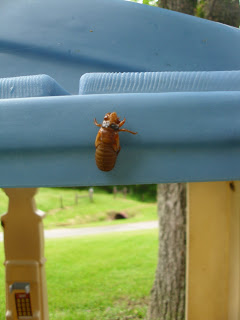 |
| Newly emerged nymph molting |
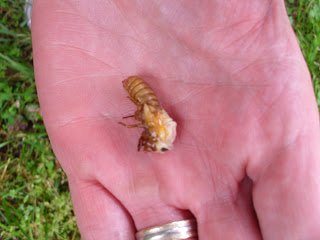 |
| Cicada nymph. People who eat these say they taste like shrimp or asparagus. I’m just not adventurous enough to confirm if this is true. |
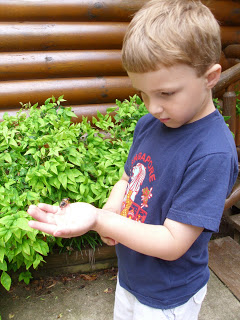 |
|
| Our nature lover has really enjoyed the emergence of this noisy insect! |
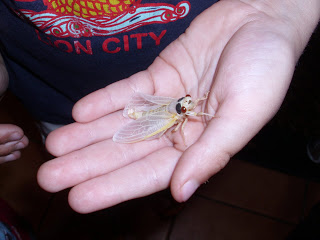 |
| Newly emerged adult. They are white after they first molt. |
Click here to see what it looks like to see them molt. It’s really strange!
A few activities to complete if you, too, are experiencing the super cicada synchronization right now:
- Enchanted Learning Life Cycle of a Cicada
- Cicada origami craft and easier to follow instructions for creating an origami cicada
- More facts about cicadas
Gary and I were sort-of lamenting the fact that we let time slip away and failed to plant our garden this year. But seeing how the cicadas are coming out everywhere and will soon be in a feeding and egg-laying frenzy, maybe this year was a good year to take a break after all!

